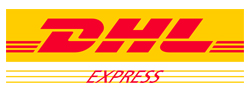You can use the warehouse process flow techniques to expand your business, maintaining and boosting your business sustainability. Every warehouse requires to project where and how they deal with their inventories. The process comes under the warehouse management process flow, and it is crucial to have the right strategy before the order fulfilment process begins. When we look into the entire scenario with an objective vision, we can analyse the techniques to measure their impact on the environment. Recent developments in warehouse process flow studies have put a strong focus on building a feasible warehouse process for your business to resist any harmful environmental impact and allow viable business growth.
The warehouse process flow is a core subcomponent of warehouse organization. In the last few years, warehouse processes have shown an increasing demand for sustainable warehouse flow creation. Sustainability is a key to the warehouse services at Ganesh Complex, and our professionals take pride in helping companies and brands develop and correspond to sustainable warehouse process systems. Several methods are available to create a process flow, including graphic design software, warehouse management system (WMS) data, and programs like Microsoft Word and Excel.
Ganesh Complex, one of the leading providers of warehouses in Kolkata, comes with an impressive warehouse management system. Warehouse Management System process flow is a visual graph or figure that shows your warehouse’s in-house tasks. The system process flow is a visual graph that depicts the warehouse’s significant tasks. It is a fundamental part of the warehouse’s organisation process. The process flow diagram shows how they receive, process, and dispatch the commodities, along with the intermediate process.
What Is Warehouse Management System Process Flow?
A warehouse management system process flow is a visual diagram that displays the primary activities of your warehouse. The process shows how the warehouse receives, processes, and ships the products. If you prefer spending some time on the process flow, it can save both your time and money in the long run. Using a WMS (Warehouse Management System) makes it easier to develop a process flow. First, you need to export the data from your WMS, which provides a detailed account of every stage your products go through. Examples of data include product lists, courier reports, and a long list of products. You can use the data to identify the process flow steps you want to implement for your warehouse. Ganesh Complex offers businesses and brands warehouse for sale in Kolkata with top-class features and facilities.
The warehouse management system aligns with your business needs and requirements. Adjust the simplicity or complexity of your chart to run the warehouse operations. The flowchart draws the movement of the warehouse products in a visual format. The flow charts primarily consist of three stages – receiving, storage, and shipping. Medium flow charts feature more steps such as multiple storage sections, cold storage, room temperature storage, picking and packing areas, and shipping stages. On the other side, complex warehouse system flow charts might have ten or more than ten stages, depending on the product needs. The steps may include a reserve warehouse, production, handling area, control, and shipping preparation. There might be changes in some of all these stages based on the type of business.
Few Essential Warehouse Process Flow Techniques to Drive a Sustainable Business
1. Bring Your Warehouses Close to The End-Users
One of the most obvious, yet not the simplest, steps you can follow to improve your warehouse process is bringing your warehouse closer to the market. Bridging the gap implies shorter warehouse process flow, less transport, less number of product exchanges, and fewer emissions.
A shorter delivery distance means less waiting time from the end of the customers and a faster supply chain for the businesses, so the sustainable warehouse process has to pay less. Locational advantages are one of the key factors when it comes to logistics and warehouse processes.
2. Invest In Renewable Energy and High Energy Efficiency
At this crucial warehouse process step, you have to pay a high cost, but you can cut it off to an extent with renewable energy. Energy management systems significantly contribute to most industrial warehouses that can work off the grid with renewable energy sources such as wind or solar.
You can build a warehouse process that diminishes inefficiency by developing a warehouse process that shuts down machines. Incorporating energy-saving technologies across your warehouse process flow is highly beneficial to confirm cost-effectiveness and sustainability. Professionals at Ganesh Complex, one prominent warehouse service provider in Kolkata , suggest you invest in renewable energy and save power.
3. Select The Right Insulating Building Material
Inadequate protection that causes climate-controlled air to leak from your warehouse is another reason for energy loss to the warehouse process. In the dock areas, the shutters constantly open and shut to let trucks and vessels flow in and out as the employees follow the warehouse process flow. Therefore, pollution issues mostly happen in the loading area.
Heating and cooling costs rise, and the power gets wasted. If the air you pay to heat or cool, your warehouse misses, you can use the appropriate dock closures and shelters to prevent this. You can incorporate SOPs (Standard Operating Procedures) for heated and cooled warehouses in your warehouse process to maintain the climate-controlled air you are using power for inside. It is an integral part of our warehouse process flow when you can save energy and cost while upgrading your workplace conditions for your team.
4. Energy Installation – Efficient Utilities
You can use natural light and ventilation and reduce any kind of adverse impact of your logistics and warehouse process on the environment. The latest indoor lighting and technology developments empower your business to fit your warehouse process flow sustainably with a smaller carbon footprint. It will help if you focus on the cross-ventilation power while designing a sustainable warehouse process. It is also important to note that lighting and ventilation affect various commercial aspects, including staff productivity and safety.
5. Choose Certified Green Warehouses or Industrial Parks
Green certification programs provide a stamp of approval to warehouses and industrial parks’ sustainability causes. When you merge your warehouse process flow with a verified and sustainable Warehouse in Kolkata, you can become sure that your business will enjoy sustainable growth in the long run. In addition, you can design a development design for your warehouse process, as certified green buildings can adapt to upgraded energy systems and warehouse layouts.
The conversion of existing warehouses into sustainable spaces needs smooth warehouse process flow systems and operations. It leads to strong supply chains supporting your warehouse process, emphasising environmental concerns, assessing potential solutions, focusing on the associated issues, and measuring the long-term benefits and downturns. When you sit back with your supply chain and warehouse management team to weigh the sustainability of your warehouse process, you need to consider ways to expand your business without adversely impacting the environment.
Warehouse Inbound Process Flow
Having a solid warehouse inbound process flow is crucial to your business productivity. Depending on the challenges and hurdles your warehouse experiences every now and then, you may recruit new employees. You can search for the warehouse for sale in Kolkata and warehouse staff online and run a quick hiring process. You must allocate a handsome salary package to the warehouse manager to ensure high business productivity.
Once you hire the right person, you need to afford the same focus level to your inbound flow as you do for outbound flow. The inbound process flow of the warehouse includes the following steps:
1. Schedule The Deliveries
Do not sit back and wait for the deliveries to happen by chance. It does not occur on its own. Adversely, it will lead to a congested delivery area and delayed deliveries. You must provide an automated scheduling system for the delivery people or mark the delivery days and times in advance.
2. Allot An Unloading Area
It is quite obvious to turn a blind eye to the unloading area while making a warehouse inbound process flow. Instead, you can use the space to keep breaking down cases and carting products.
3. Focus On Inventory Management
It is not enough to put the products on shelves for long; you also need a precise and speedy inventory management process. You can feature the storage of special handling requirements in your process flow. Single products like warehouse labels which are a part of the storage are primary parts of the inbound flow.
4. Maintain And Update Reports
Your customers’ orders depend on the numbers that your warehouse inventory management software uses. You must run a periodic check on the products by an inventory audit to avoid any damages.
Warehouse Outbound Process Flow
A company must monitor the warehouse’s outbound operation flow to ensure its commercial success. Accurate supervision of the outbound operation plays a vital role in satisfying distributors and customers.
1. Determine A Packing Zone
The production team of a warehouse must operate the system without hassle. The warehouse system must maintain stock keeping unit numbers, machines for printing labels, scanners, and technical equipment for packaging and delivering materials to avoid delays.
2. Keep Track of The Shipping and Delivery Updates
A Warehouse Management System creates a network through which one can see products that have already gone for delivery and the ones that are still under process. Several warehouse management systems send notifications when clients receive the ordered products. It reduces the number of unwanted follow-up questions on the package. Ganesh complex, a top-notch warehouse service provider in Kolkata, features the central warehouse outbound process flow.
3. Fix A Staging Location for Shipments
Professionals pack the products and pile them up in the production house until they are ready for pickup and delivery. When the warehouse is well-organised, it becomes easy for the suppliers to begin the loading process.
4. Maintain Your Records
The process of outbound flow must include a record of the products that have already departed the warehouse for the destination. It is a must to keep track of every finished task, either you have done it manually or finished it with the help of software.
The Fundamental Warehouse Processes
To better understand the warehouse management program, let’s take a look at the core processes. The key warehouse processes include receiving, storage, picking, packing, shipping, returns, and many more.
1. Receiving
The receiving phase involves control over the delivery to your warehouse of the correct quantity and quality product at the right time. You can break the process into small steps – placing a purchase order, making space for the warehouse, unloading the products, verifying, and filling the database.
At this stage, automated machines that capture the cargo measurements can be beneficial, as are dock schedulers, to ensure that an adequate number of workers are on hand.
2. Storage
Location control is the base of warehousing, primarily if you deal with different types of products and have to handle the stock for multiple clients. Being able to track the exact location of every SKU (Stock Keeping Unit) to prevent any kind of theft helps optimise further order processing. Storage conditions play a crucial role in some product categories. Warehouse Management System keeps track of the expiry dates and shelf life and prioritises the products accordingly.
3. Picking
Creating and picking lists is an exhausting task. Warehouse Management System lets you sort and print lists accordingly, such as by the names of bin location, order, date, Stock Keeping Unit, etc. Mobile devices and voice systems can guide the employees to the exact place of the product storage. If you have to pick multiple items, you must choose the optimal route with the necessary equipment to save time. Barcode ensures the accuracy of determining the right things only. If you are searching for a warehouse in Kolkata , come to us and consult the professionals to get the best advice.
4. Packing
You need to calculate the type and amount of packaging for each order to ensure an optimal packing process. There is no need to manually enter the address or retype the tracking number if you print the shipping labels for UPS, FedEx, and USPS when employees have the exact information for every item.
5. Shipping
Most warehouse management systems offer real-time parcel tracking and rate calculation. If you need to ship multiple orders to the same address, you can merge them to reduce shipping costs. Some providers also feature cross-docking and drop-shipping.
6. Returns
Warehouse Management Systems help streamline the unpleasant process by automating each step, including creating the return, recording the reason, updating stock, issuing refunds, and generating reports. Later on, other steps include invoicing, scheduling, increased performance, safety control, complete cost estimation, and many more.
Final Takeaways
There is a lot to say, but let us remind you to begin with small steps. Opt for one or two most appropriate factors you can implement for your business for the quickest return, and hire the best warehouse space. There are several reasons why warehouse process flow is so vital. The expansion of the warehousing industry has been on a constant rise with a remarkable growth trajectory. It is a positive sign, indeed. Therefore, it is so important to leverage warehouse process flow techniques to make your business more sustainable. Contact our professionals for more suggestions and insights.









